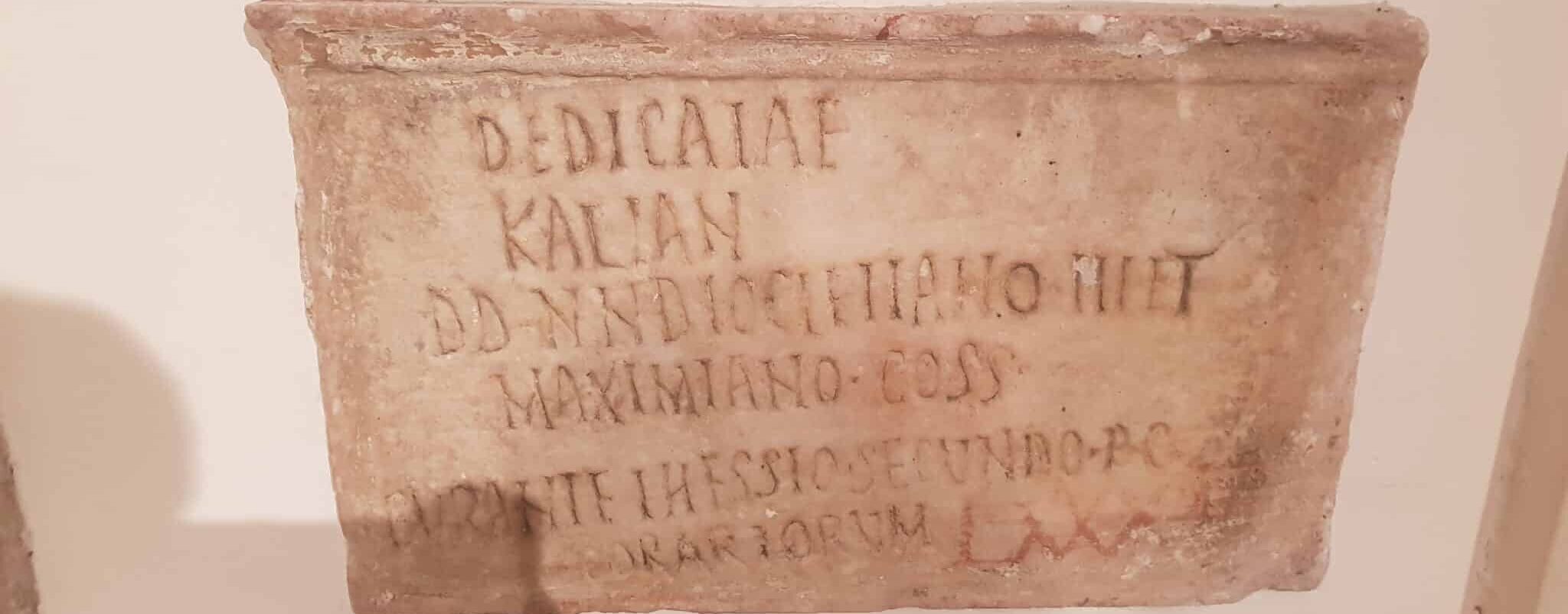Official Name: IMPERATOR CAESAR GAIUS AURELIUS VALERIUS DIOCLETIANUS AUGUSTUS
Birthdate: Diocletian was born on December 22, but his year of birth is disputed. He was probably born around 245 CE.
(Aurelius Victor, Epitome de Caesaribus, 39) (P. Panop. Beatty 2 Z. 161 – 167)
Birthplace: Diocletian was born in the province of Dalmatia, most likely in the city of Salona (modern-day Solin, Croatia).
(Aurelius Victor, Epitome de Caesaribus, 39) (Zonaras, Extracts of History, 12.32)
Reign: Diocletian was declared emperor by the legions in Nicomedia in 284 CE, following the assassination of his predecessor Numerian. In 305 CE, after ruling the empire for over twenty years, Diocletian abdicated the position of emperor and retired to his palace in Split.
(Historia Augusta, Lives of Carus, Carinus and Numerian, 12-13) (Zonaras, Extracts of History, 12.30 & 12.32)
Marriages:
Prisca
(Lactantius, On the Deaths of the Persecutors, 15)
Children:
Galeria Valeria (daughter by Prisca)
(Lactantius, On the Deaths of the Persecutors, 15) (Zonaras, Extracts of History, 12.31) (RIC VI Siscia 196)
Death: Diocletian died of natural causes at his palace in Split. Sources agree that Diocletian died on December 3, but his year of death is disputed. He most likely died around 312 CE.
(Descriptio Consulum) (Aurelius Victor, Epitome de Caesaribus, 39)

Reenactors of Emperor Diocletian and his wife Prisca, Diocletian’s Palace, Split, Croatia, June 2015

Aureus of Diocletian, Palazzo Massimo alle Terme, Rome, December 2018.
293
(Zonaras, Extracts of History, 12.31) (Eutropius, Short History of the Roman Empire, 9.22)
301
303
(Lactantius, On the Deaths of the Persecutors, 12 & 15) (Eusebius, Ecclesiastical History, 8.2)
305
(Aurelius Victor, Epitome de Caesaribus, 39)
305
(Eutropius, Short History of the Roman Empire, 9.23 & 9.25)
This content is brought to you by The American Institute for Roman Culture, a 501(C)3 US Non-Profit Organization.
Please support our mission to aid learning and understanding of ancient Rome through free-to-access content by donating today.
Cite This Page
Cite this page as: Darius Arya, The American Institute for Roman Culture, “Diocletian” Ancient Rome Live. Last modified 01/14/2024. https://ancientromelive.org/Diocletian/
License
Created by The American Institute of Roman Culture, published on 01/14/2024 under the following license: Creative Commons: Attribution-NonCommercial-ShareAlike. This license lets others remix, tweak, and build upon this content non-commercially, as long as they credit the author and license their new creations under the identical terms. Please note that content linked from this page may have different licensing terms.


